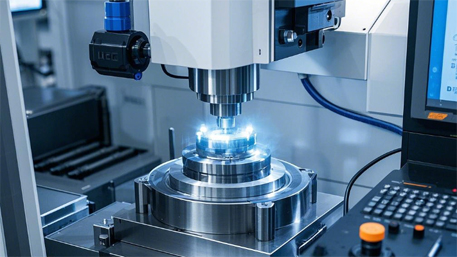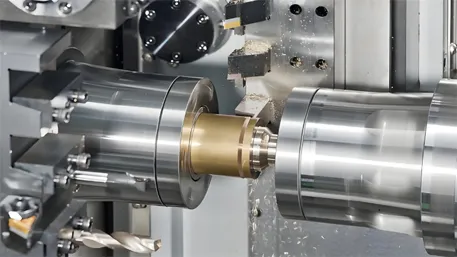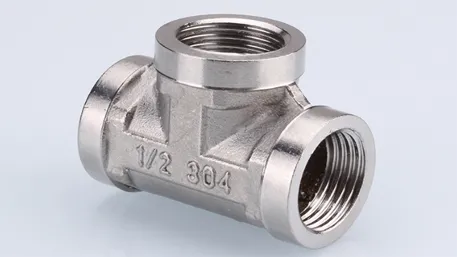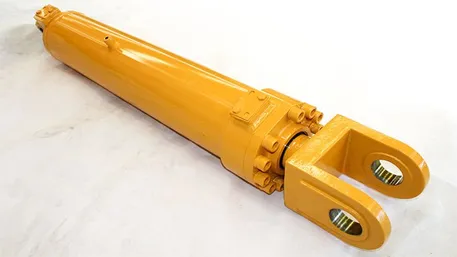I. Cognitive Reconstruction: From Sci – fi Imagination to Industrial Reality
When people talk about artificial intelligence, they often think of scenarios like the machine – ruled world in The Terminator. However, the application of AI in the manufacturing industry presents a completely different picture. Data from Autodesk shows that AI – assisted CNC machining has helped over 500,000 enterprises globally improve production efficiency, demonstrating its nature as a technical tool rather than a threat of replacement.

II. Analysis of CNC Machining Technology (Basic Framework)
Technical Definition: Computer Numerical Control Machining System
Hardware Composition: Interchangeable Tool Unit + Central Control System
Software Support: Compatible with mainstream CAD platforms (such as Autodesk Fusion)
Operation Process: Programming → Automatic Machining (Cutting/Drilling/Grinding)
Key Nodes of Human Intervention
Tool Replacement Frequency: Manual intervention is required on average every 2 hours.
System Calibration: Daily basic accuracy verification.
Process Monitoring: Real – time anomaly detection needs.
III. The Empowering Path of AI Technology (Efficiency Revolution)
Intelligent Drawing System
Drawing Generation Speed: From 4 hours in the traditional way to 8 minutes with the AI system (a 30 – fold increase in efficiency).
Error Rate Control: From 5% in manual operation to 0.3% with the AI system (a 16 – fold improvement in quality).
Typical Case: A certain automotive parts manufacturer achieved the automated processing of 2,000 drawings per month on average.
Tool Path Optimization
Programming Efficiency: The cooperation project with CloudNC shortened the programming time by 95%.
Tool Life: Prolonged the service cycle by 30% through vibration analysis.
Processing Efficiency: The production of a certain aerospace part was accelerated by 220%.
Virtual Simulation System
Reduction of Trial – and – Error Costs: Reduced physical tests by 80%.
Process Verification Cycle: Compressed from 72 hours to 4 hours.
Typical Case: A certain medical device factory avoided a mold loss worth $1.5 million through simulation.
IV. The Evolution of the Manufacturing Ecosystem (Data Interconnection)
Cloud Platform Integration
Data Response Speed: The Fusion API reduced the response time of the quotation system to 12 seconds.
Remote Collaboration: Users in 37 countries around the world achieved real – time process synchronization.
Optimization of Production Decisions
Inventory Turnover Rate: AI prediction increased it by an average of 45%.
Equipment Utilization Rate: Increased from 63% to 89%.
V. Future Outlook: Prediction of Technological Evolution from 2025 – 2030
Human – Machine Collaboration Model
Skill Transformation of Operators: 70% of traditional technicians will master the management of AI systems.
Creation of New Job Positions: It is expected that 500,000 “digital machinist” positions will be newly created globally.
Trend of Technology Integration
Penetration Rate of the Internet of Things: The networking rate of processing equipment will increase from 32% to 78%.
Application of Edge Computing: The delay in real – time data processing will be reduced to the 50 – ms level.
VI. The Irreplaceable Human Value
The latest industry survey shows (2023 Manufacturing Technology White Paper):
Complex Decision – making Needs: 89% of non – routine problems still require manual judgment.
Creative Design Process: AI can only complete 30% of original work.
Quality Control: Manual reinspection increases the yield rate by an additional 2.3 percentage points.
Conclusion: The Revolutionary Evolution of Intelligent Tools
AI will not replace CNC machining but is reshaping the DNA of the manufacturing industry. As an expert pointed out, “The future factory will be a fusion of biological and digital genes, and the collaboration between human intelligence and machine intelligence will release an efficiency dividend of over 100%.” The essence of this transformation is to evolve machinists from “operators” to “manufacturing commanders”, opening up a broader value space on the new digital battlefield.






